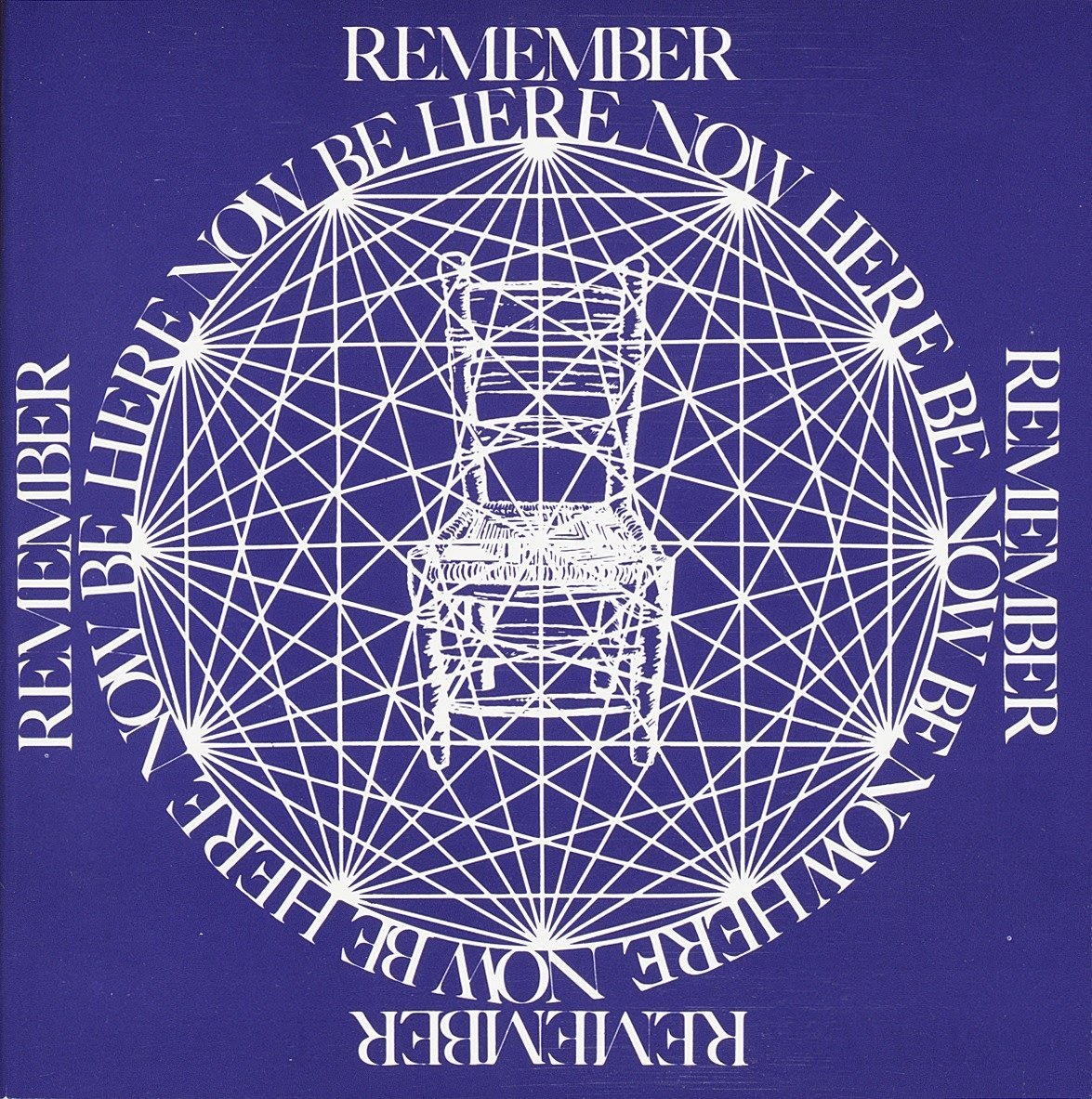Ram Dass, Be Here Now (1971)
When I was preparing for my trip to India in 1997, I lived with my grandparents in their Upper West Side apartment. My room had been my grandmother’s psychology studio, and it was lined with her books. (As an adolescent, I found the Kinsey Report.) I remember the odd, square book with the trippy purple cover staring out at me: REMEMBER NOW BE HERE NOW HERE BE NOW BE NOWHERE NOW BE HERE NOW BE HERE NOW.
I never opened it back then, far too focused on being elsewhere soon to bother with being here now. But somehow it crept back into my consciousness sometime last year. Be Here Now came to me at a moment when I needed it (which is something that would have surprised neither Ram Dass nor my grandmother) and played no small part in unlocking the door to my current writing project.
Be Here Now has no official author, but it’s by Ram Dass, born Richard Alpert, a smart Yid from Boston who found his way to Harvard, then to psychedelics, and finally to India. The book couldn’t be more of its moment if it were wearing a beaded macrame dress (it almost is) and listening to Joy to the World by Three Dog Night (it almost is). It’s divided into two sections. The first is a kind of graphic novel, all swirly psychedelics, about Alpert’s journey to becoming Ram Dass. The second is a cookbook, more or less, for tuning in and dropping out and going on a spiritual journey like Alpert did, with chapters on everything from breathing exercises to sex (with a delightfully honest admission that no one involved in writing the book really knows how to handle sex and spirituality) to starting an intentional community.
The time capsule quality of this thing is inescapable, from its visual style to its groovy dude diction. I was born in Marin County, California, in 1974, so this whole vibe is one that’s familiar from my childhood. Be Here Now is my madeleine. It’s full of absolute horseshit nonsense, as you would expect it to be, but it’s also wonderful, so sweet and lovely and loving and full of hope from a time when spiritual transformation seemed immanent and we didn’t know yet the Hare Krishnas abused kids. Like the best of that era, it achieves its saintliness by eschewing it. Dass is just another holy schmuck on the path, and he makes you realize you’re one too, and that it’s all OK. Just be where you are. Be here now.

